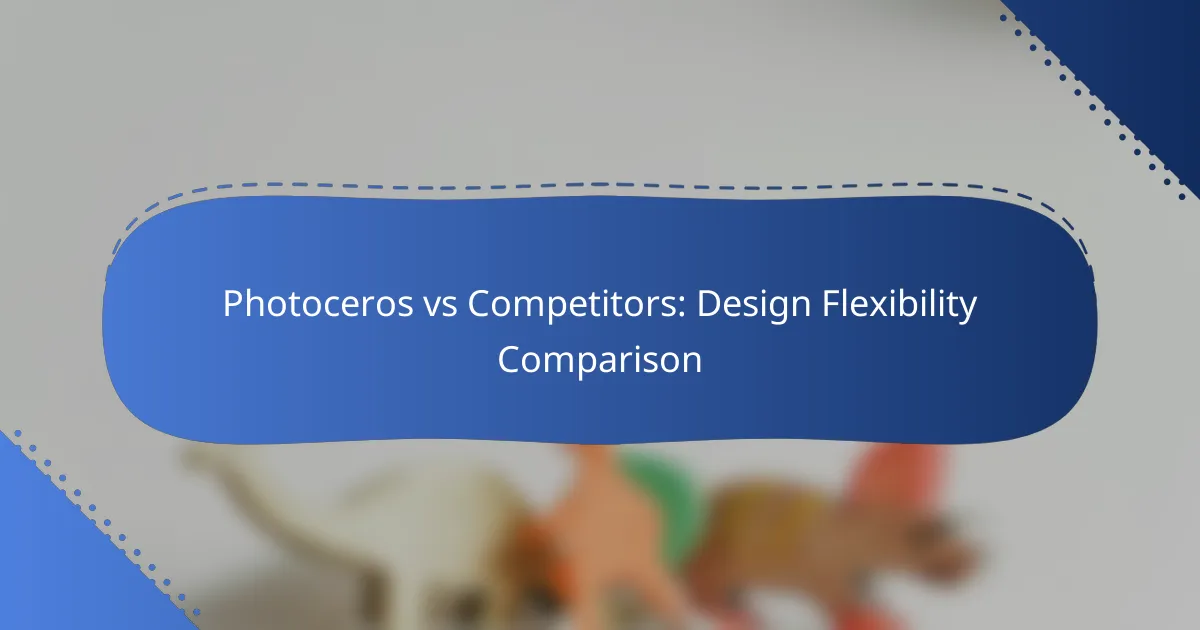In the competitive landscape of design software, Photoceros distinguishes itself with exceptional design flexibility, enabling users to craft highly customized projects. With a diverse array of templates and extensive file format support, Photoceros outperforms its competitors by offering a user-friendly experience that prioritizes both creativity and functionality.
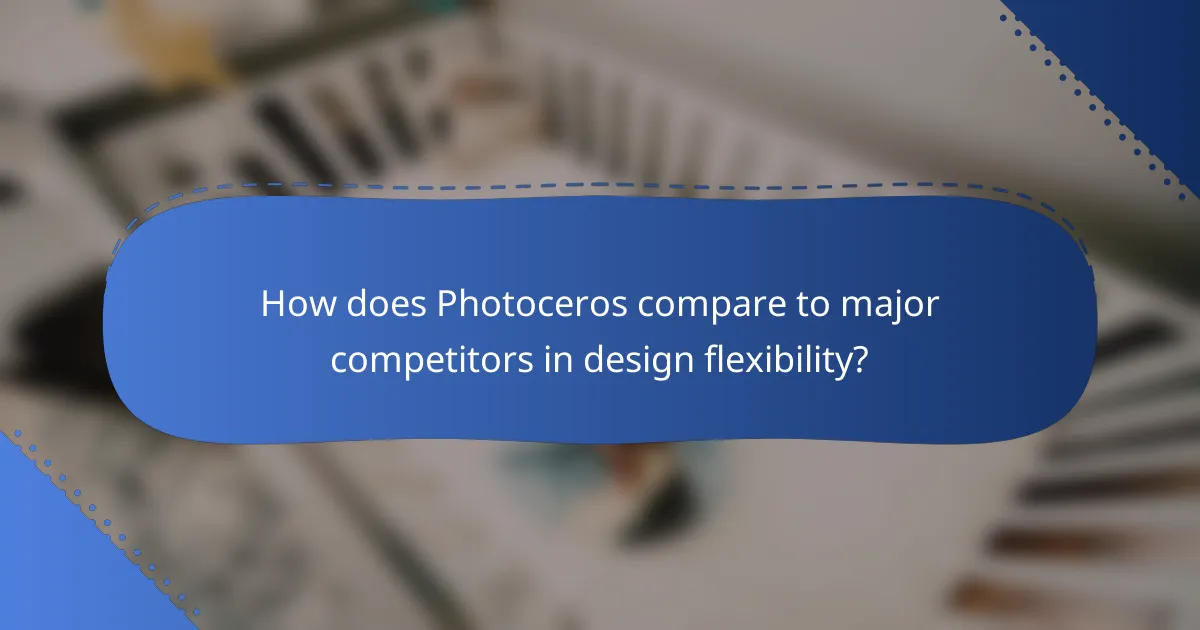
How does Photoceros compare to major competitors in design flexibility?
Photoceros stands out among major competitors by offering superior design flexibility, allowing users to create highly customized projects. This flexibility is evident in its range of templates, file format support, and overall adaptability compared to other solutions in the market.
Photoceros offers customizable templates
Photoceros provides a wide array of customizable templates that cater to various design needs. Users can modify colors, layouts, and elements to fit their specific requirements, making it suitable for diverse applications, from marketing materials to product packaging.
This level of customization allows businesses to maintain brand consistency while also experimenting with different design aesthetics. The ability to start with a template and adjust it significantly reduces the time needed for design iterations.
Competitors provide limited design options
In contrast, many competitors offer a restricted selection of templates that often lack the flexibility needed for unique projects. Users may find themselves constrained by predefined layouts that do not allow for significant alterations, limiting creative expression.
This limitation can lead to generic designs that fail to stand out in a crowded marketplace. Businesses looking for distinctive branding may find these constraints detrimental to their marketing efforts.
Photoceros supports various file formats
Photoceros excels in supporting a wide range of file formats, including popular options like PDF, PNG, and SVG. This versatility ensures that users can easily export their designs for different applications without worrying about compatibility issues.
Being able to work with multiple formats allows for seamless integration into various workflows, whether for print or digital use. This flexibility is particularly beneficial for teams that require collaboration across different platforms.
Competitors restrict file compatibility
Many competitors impose restrictions on file compatibility, often limiting users to specific formats. This can create challenges when trying to share or utilize designs across different software or platforms.
Such restrictions can hinder productivity, as users may need to convert files or adjust their designs to meet compatibility requirements. This adds unnecessary steps to the design process, potentially delaying project timelines and increasing frustration.

What are the key design features of Photoceros?
Photoceros offers a range of design features that prioritize flexibility and user-friendliness. Its capabilities allow users to create visually appealing and functional designs tailored to various needs.
Drag-and-drop interface
The drag-and-drop interface of Photoceros simplifies the design process, enabling users to easily arrange elements on their canvas. This feature is particularly beneficial for those without extensive technical skills, as it allows for intuitive manipulation of design components.
Users can quickly add images, text, and other elements by dragging them from a sidebar directly onto the workspace. This functionality reduces the time spent on layout adjustments and enhances overall productivity.
Responsive design capabilities
Photoceros includes responsive design capabilities that ensure creations look great on various devices, from desktops to smartphones. This feature automatically adjusts layouts and elements based on screen size, providing a seamless user experience.
Designers should consider testing their projects on multiple devices to ensure optimal performance. Utilizing Photoceros’s responsive settings can help avoid common pitfalls like overlapping text or misaligned images.
Integration with third-party tools
Photoceros supports integration with various third-party tools, enhancing its functionality and allowing for a more streamlined workflow. Users can connect with platforms like Google Analytics, social media channels, and e-commerce solutions to extend their design capabilities.
When integrating these tools, ensure compatibility and check for any additional costs associated with premium features. This can help maximize the benefits of using Photoceros while maintaining budget considerations.
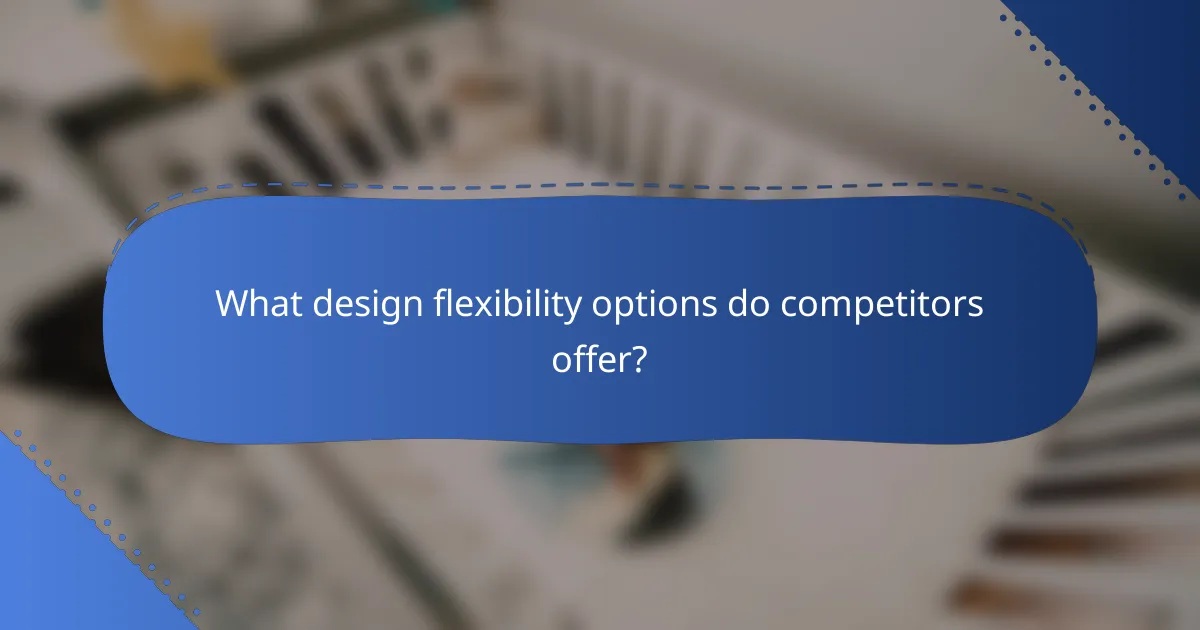
What design flexibility options do competitors offer?
Competitors in the design software market provide a variety of flexibility options, including predefined templates and basic customization tools. These features allow users to create tailored designs efficiently while balancing ease of use with creative control.
Predefined templates
Many competitors offer a wide range of predefined templates that cater to different design needs, such as marketing materials, social media posts, and presentations. These templates can significantly speed up the design process, allowing users to start with a professional layout and modify it as needed.
When choosing a template, consider the specific requirements of your project. Look for templates that are easily editable and adaptable to your brand’s style. Some platforms may offer industry-specific templates, which can be particularly useful for niche markets.
Basic customization tools
Basic customization tools allow users to modify templates or create designs from scratch. These tools typically include options for changing colors, fonts, and images, providing a level of personalization that can enhance brand identity.
While basic customization is often user-friendly, it can limit advanced design capabilities. If you require more intricate designs, consider platforms that offer additional features like layering, vector editing, or integration with other design software. Always check for user reviews to gauge the effectiveness of these tools in real-world applications.

What are the pricing differences between Photoceros and its competitors?
Photoceros employs a tiered pricing model that allows users to select plans based on their specific needs, while many competitors typically offer flat-rate pricing. This difference can significantly impact costs depending on usage patterns and features required.
Photoceros offers tiered pricing plans
Photoceros provides several pricing tiers, which cater to varying levels of usage and feature access. For instance, users can choose from basic plans for minimal needs to more comprehensive plans that include advanced features and higher usage limits. This flexibility can lead to cost savings for businesses that do not require extensive services.
Each tier often includes a different set of functionalities, allowing users to scale their investment according to their growth. For example, a small startup might start with a lower-tier plan and upgrade as their requirements expand, ensuring they only pay for what they need.
Competitors have flat-rate pricing
In contrast, many competitors use a flat-rate pricing structure, which charges a single fee regardless of usage. This model can simplify budgeting but may not be cost-effective for all users, especially those with fluctuating needs. Businesses that require only basic features might end up overpaying for services they do not utilize.
Flat-rate pricing can also limit flexibility, as users may find themselves locked into a plan that does not adapt to their changing requirements. As a result, companies should carefully evaluate their expected usage and feature needs when considering competitors with this pricing model.
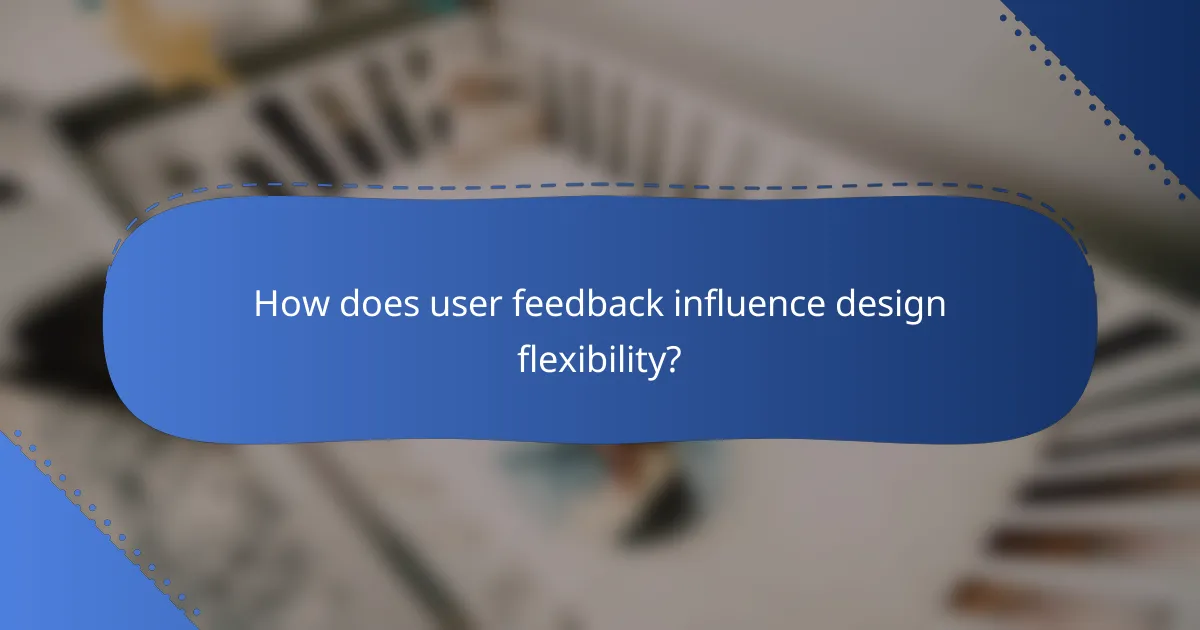
How does user feedback influence design flexibility?
User feedback plays a crucial role in enhancing design flexibility by allowing companies to adjust their products based on real-world experiences and preferences. This iterative process helps manufacturers like Photoceros refine their offerings to better meet user needs, often resulting in more adaptable and user-friendly designs.
Photoceros adapts based on user reviews
Photoceros actively incorporates user reviews into its design process, enabling rapid adjustments and improvements. For instance, if users express a need for additional features or modifications, Photoceros can quickly implement these changes in subsequent product iterations.
This responsiveness not only enhances user satisfaction but also fosters a sense of community among users, as they see their feedback directly influencing product development. Regular updates based on user input can lead to a more tailored experience, ensuring that the product evolves alongside its user base.
Competitors may lag in updates
In contrast, many competitors often lag behind in integrating user feedback into their designs. This delay can stem from slower decision-making processes or a lack of direct engagement with customers. As a result, their products may not reflect current user needs or preferences, leading to missed opportunities for improvement.
For example, if a competitor receives feedback about a specific feature but takes months to address it, users may become frustrated and seek alternatives. This slower adaptation can hinder a competitor’s ability to remain competitive in a rapidly changing market.
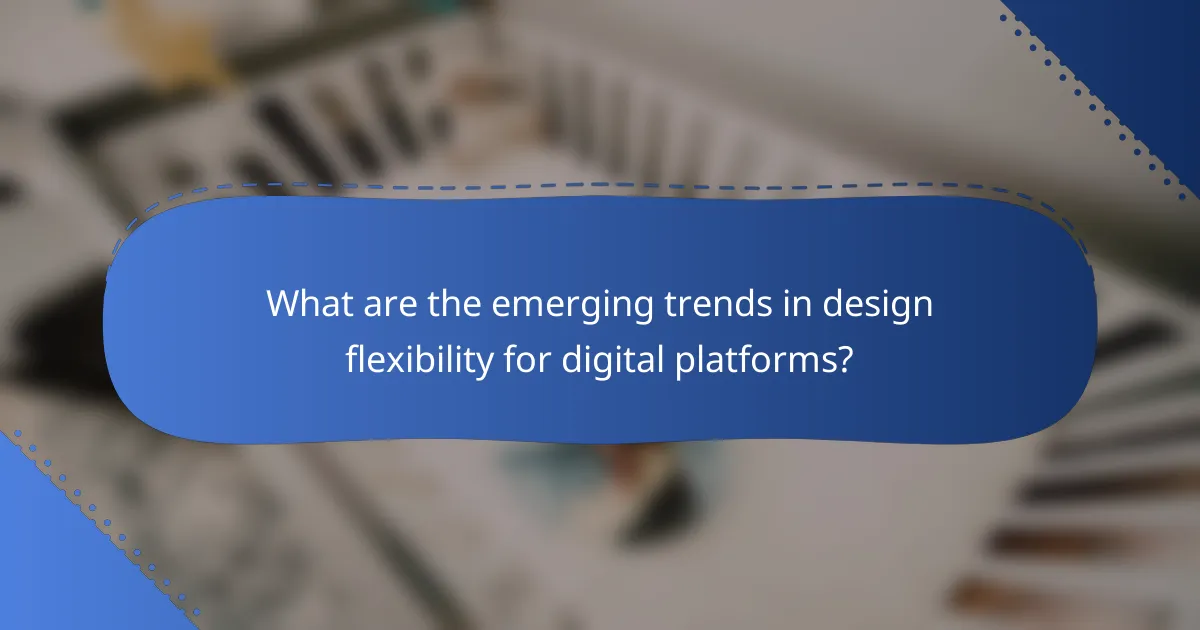
What are the emerging trends in design flexibility for digital platforms?
Emerging trends in design flexibility for digital platforms emphasize adaptability and user engagement. Key areas of focus include the integration of AI-driven design tools, user-generated content, and mobile-first approaches, which collectively enhance the overall user experience.
Increased demand for AI-driven design tools
The rise of AI-driven design tools is reshaping how designers approach flexibility in digital platforms. These tools automate repetitive tasks, provide intelligent suggestions, and enable rapid prototyping, allowing designers to focus on creativity rather than technical constraints.
For instance, platforms like Adobe Sensei and Canva leverage AI to streamline design processes, making it easier for users to create visually appealing content without extensive design knowledge. This trend is particularly beneficial for small businesses and startups with limited resources.
Focus on user-generated content integration
User-generated content (UGC) is becoming a cornerstone of flexible design strategies. By incorporating UGC, brands can create more authentic and relatable experiences, fostering community engagement and loyalty.
Platforms such as Instagram and TikTok thrive on UGC, allowing users to contribute content that enhances brand narratives. Companies should consider implementing features that encourage customers to share their experiences, which can be showcased on their websites or social media channels.
Growth in mobile-first design approaches
Mobile-first design is increasingly essential as more users access digital platforms via smartphones. This approach prioritizes mobile usability, ensuring that designs are responsive and functional across various devices.
Designers should adopt a mobile-first mindset by simplifying layouts, optimizing images, and enhancing load times. Tools like Bootstrap and responsive frameworks can aid in creating designs that perform well on mobile, ultimately improving user satisfaction and engagement.
